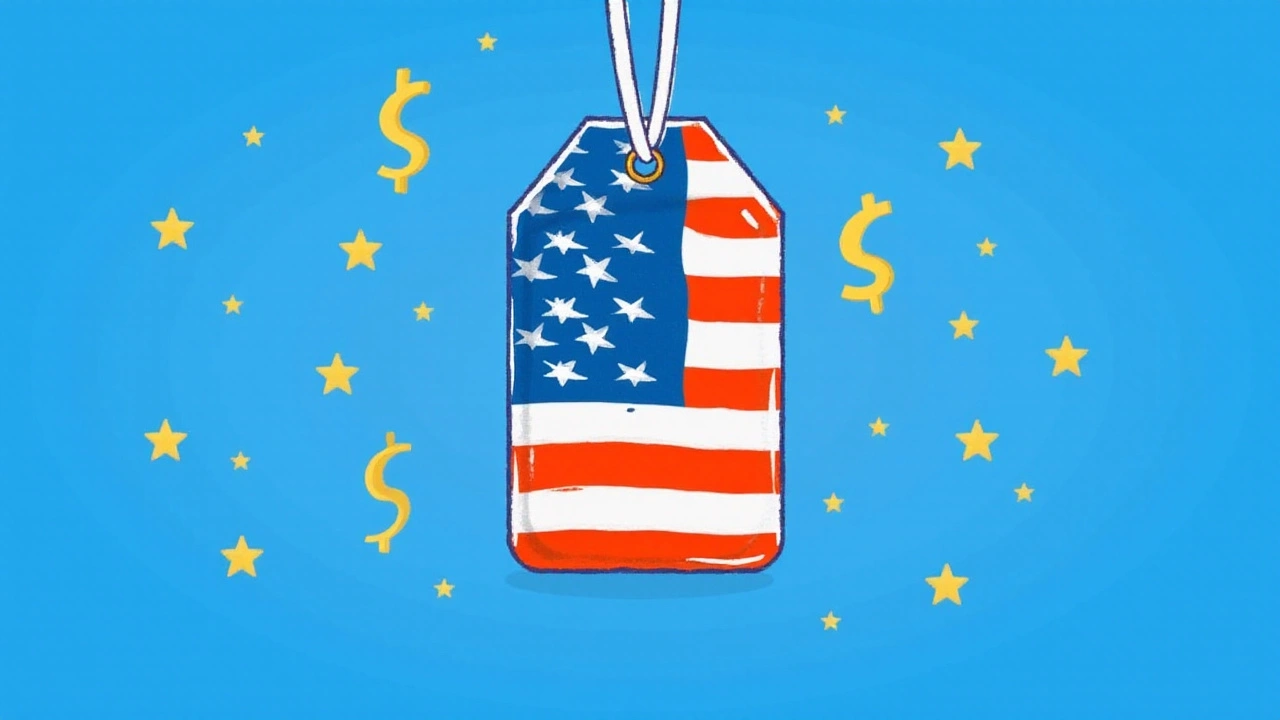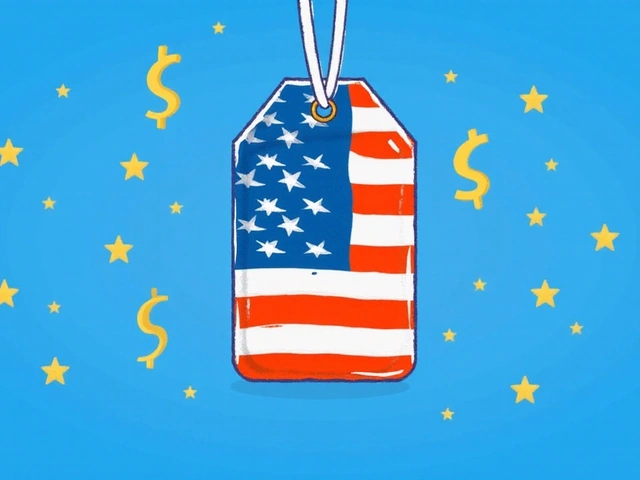An Aggressive Stance Against De-Dollarization
In a move that has stirred significant debate, US President-elect Donald Trump recently announced his intention to impose 100% tariffs on certain BRICS nations. The tariffs are a part of Trump's strategy to deter these countries from developing a new currency, which could potentially challenge the United States dollar's position as the world's primary reserve currency. This announcement came through Trump's favorite medium, Truth Social, where he made it clear that any steps taken by BRICS nations towards the establishment of a competing currency would face severe economic sanctions from the US.
The BRICS group, consisting initially of Brazil, Russia, India, China, and South Africa, has recently been expanded to include countries like Egypt, Ethiopia, Iran, and the UAE. The expansion and interest in a non-dollar currency arrangement come amid growing global dissatisfaction with the dollar-dominated financial system. Issues such as sanctions, particularly the ones targeted against Russia in the fallout of its 2022 conflicts, have raised concerns about over-reliance on the dollar. These sanctions demonstrated the vulnerabilities countries face when their economies are deeply intertwined with the US financial system, providing a significant impetus for the BRICS nations to explore alternative financial systems.
The Viability of a BRICS Currency
The concept of a BRICS currency isn't new, but the idea is gaining traction as these nations seek financial independence. However, its success is far from assured. Critics point to the vastly different economic systems and strategic priorities within the BRICS bloc, which may hinder a cohesive and unified approach. The differing stages of economic development, economic size, and policy objectives among member nations pose substantial challenges to achieving a shared monetary initiative. For example, China's and India's economic policies often diverge sharply, making collaboration on a singular currency a complex process. Yet, the very discussion of such an initiative underscores a significant global shift towards reducing dollar dependency.
Potential Repercussions on Trade and Global Markets
Trump's approach, featuring the threat of severe tariffs, is not unprecedented. During his first term, Trump utilized tariffs as a bargaining chip in trade disputes with various countries, including notable tensions with China, Canada, and Mexico. His proposed tariffs against BRICS nations could potentially spark new rounds of trade conflicts, leading to ripple effects in global markets. If imposed, these tariffs might not only hurt bilateral trade with the US but could also force BRICS countries to seek new alliances, resulting in long-lasting shifts in global trade dynamics.
Despite these possible confrontations, many experts assert that the US dollar's dominance remains firmly intact, at least for the near and medium term. The dollar represents approximately 58% of the world's foreign exchange reserves, showcasing its enduring strength and stability in international finance. Consequently, while Trump's threats may upset the status quo, the structural and institutional strength of the dollar suggests that it is unlikely to face an existential threat any time soon.
Strategic Calculations by Key Players
Amid growing ambitions within the BRICS bloc, Saudi Arabia's approach stands out due to its decision to stay in observer status rather than committing fully to BRICS membership. This strategic choice allows Riyadh to maintain flexibility and maneuverability in a complex global landscape. By keeping its options open, Saudi Arabia continues to hedge its bets, balancing between strengthening its ties with Western economies and exploring new economic opportunities with the BRICS countries.
Trump's focus on using tariffs as leverage aligns with his earlier strategy of pressuring neighboring countries, like Mexico and Canada, to address specific issues affecting the US, such as illegal immigration and drug trafficking. Such measures in the past have had varying degrees of success but highlight a consistent theme in Trump's economic policy – using economic pressure as a primary negotiation tool.
Trump's Longstanding Tariff Tactics
Indeed, Trump's tariff threats resonate with previous tactics during his first term. His administration's pattern involved employing tariffs to exert pressure in trade negotiations, seeking to promote American economic interests abroad. Whether in efforts to renegotiate NAFTA or influence China's trade practices, tariffs became a cornerstone of Trump's economic diplomacy. Critics argue that such policies risk creating economic strain at home and abroad, potentially leading to retaliatory actions that could disrupt established trade networks.
While the Atlantic Council and other think tanks speculate that the US dollar's global reserve status is not immediately threatened, the potential ramifications of a prolonged tariff confrontation with BRICS nations cannot be underestimated. If these countries advance with a separate currency, it could serve as a catalyst for change in the international monetary landscape, challenging the existing dominance of the US dollar and reshaping the global economic order.




Comments
Analyzing the tariff proposal, it is clear that the United States seeks to reinforce the dollar's preeminence by leveraging trade barriers. The move is positioned as a deterrent against the emergence of a BRICS-centric reserve currency. While the intent is assertive, historical data suggest that the dollar’s share in global reserves remains robust. Nevertheless, policymakers must weigh the collateral impact on domestic industries and supply chains. A balanced approach would combine diplomatic engagement with strategic economic safeguards.
From a structural standpoint, launching a unified BRICS currency faces considerable obstacles. Member economies operate under divergent monetary policies, which complicates convergence on a single exchange rate mechanism. Moreover, the technological infrastructure required for cross-border settlement is still nascent in several participating nations. The feasibility study must therefore address liquidity provision, governance frameworks, and contingency protocols for crisis scenarios. Only through meticulous coordination can the bloc hope to present a viable alternative to the dollar.
Wow thsi is a wild idea!
Tariffs at 100% are nothing short of reckless economic warfare. Such blunt instruments ignore the interdependence that modern supply chains demand. The collateral damage will ripple through domestic markets, inflating prices for everyday consumers. History shows that punitive trade measures rarely achieve their political aims without severe side‑effects. This policy reeks of short‑term bravado over long‑term strategy.
From a macro‑economics perspective, the dollar's reserve dominance is underpinned by deep liquidity and credible institutional frameworks. Any erosion of this status would require coordinated central bank actions across multiple jurisdictions. The BRICS expansion introduces diversified growth vectors but also amplifies policy heterogeneity. Consequently, the probability of a seamless currency substitution remains low in the medium term. Vigilance, however, is essential to anticipate systemic shifts.
meh 🙄
Interesting move, keep the optimism high! We can still learn from past tariff outcomes.
Addressing the earlier point about the 100% tariffs, it is imperative to contextualize the broader geopolitical tapestry into which this policy is woven. The BRICS nations, each with distinct fiscal architectures, cannot merely be painted with a monolithic brush; their economic aspirations are as varied as the climates across their territories. When one examines the historical precedent of protectionist measures, the resultant market distortions often manifest not only in price inflation but also in supply chain fragility, a nuance that is sometimes eclipsed by headline rhetoric. Moreover, the potential retaliatory mechanisms-ranging from counter‑tariffs to strategic realignments within multilateral trade agreements-introduce a layer of uncertainty that may reverberate far beyond the immediate actors. It is also worth noting that the United States, while wielding substantial monetary clout, remains embedded within a global financial ecosystem where interdependence is a double‑edged sword; the very strength of the dollar is partially derived from the confidence of international partners. Therefore, any abrupt policy shift must be calibrated against the risk of eroding that confidence. In parallel, the hypothetical BRICS currency project, though ambitious, confronts formidable obstacles: aligning fiscal policies, synchronizing monetary targets, and establishing a universally accepted settlement infrastructure. These challenges are compounded by divergent political priorities, which could stall consensus building. While the allure of a multipolar monetary order is intellectually stimulating, the pragmatic pathway toward such an outcome is strewn with institutional inertia and logistical complexity. Consequently, stakeholders should prioritize diplomatic engagement, transparent communication, and incremental policy adjustments over binary, punitive actions. Such a measured approach not only safeguards domestic economic stability but also preserves the United States' reputation as a reliable partner in the global arena. Ultimately, the objective should be to foster a resilient, adaptable trade environment that can accommodate emerging financial innovations without resorting to draconian measures that may backfire.
From a patriotic standpoint, defending the dollar is non‑negotiable; the nation's economic sovereignty hinges on it. While the tone may appear friendly, the underlying message is clear: any attempt to undermine our reserve currency is a direct challenge to American prosperity. Patience with multilateral schemes that dilute our influence is ill‑advised; decisive action preserves our competitive edge.
Observing the current discourse, one can discern that the interplay between tariffs and currency diversification is more intricate than it appears. While the United States seeks to protect its monetary leadership, BRICS members are simultaneously exploring mechanisms that could recalibrate global financial flows, prompting a need for nuanced policy responses.
Great points made here looking forward to see how this evolves
The tariff threat is just a smokescreen for deeper agenda; hidden elites are using the narrative to push a shadow currency that will strip ordinary citizens of purchasing power. This isn’t about trade fairness-it’s about consolidating control behind a façade of national security. The timing aligns with covert operations that aim to destabilize markets and reroute wealth to a select few.